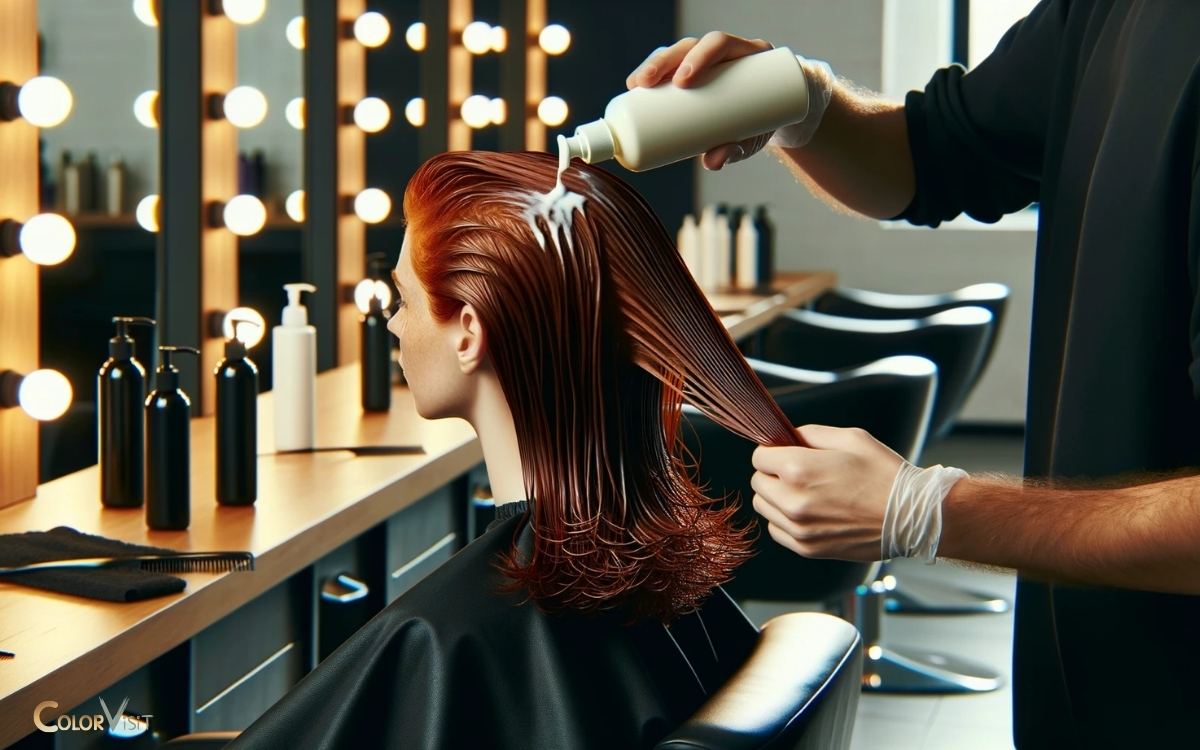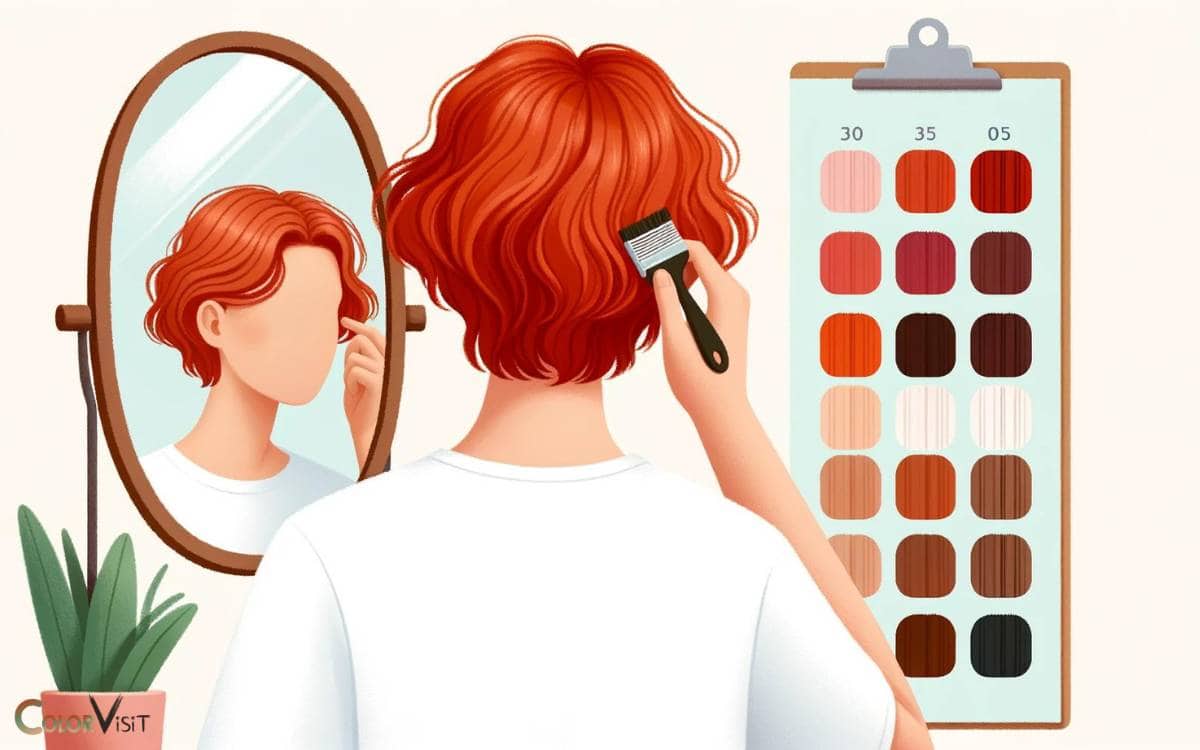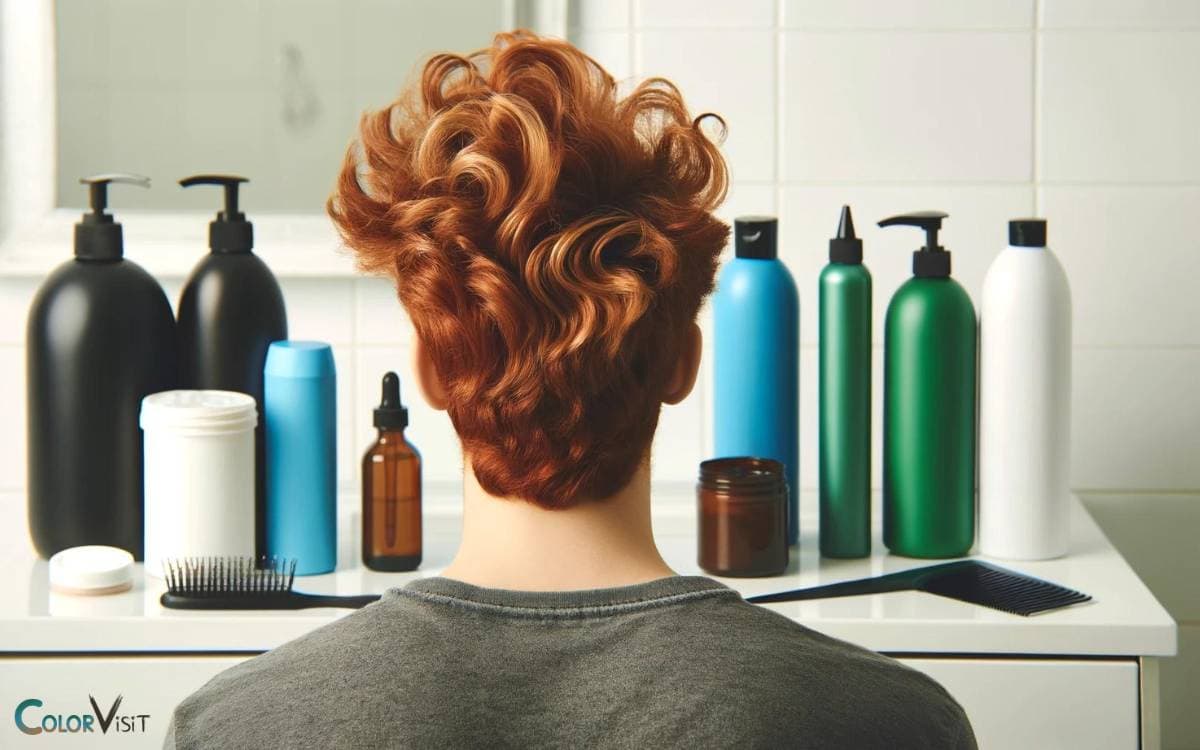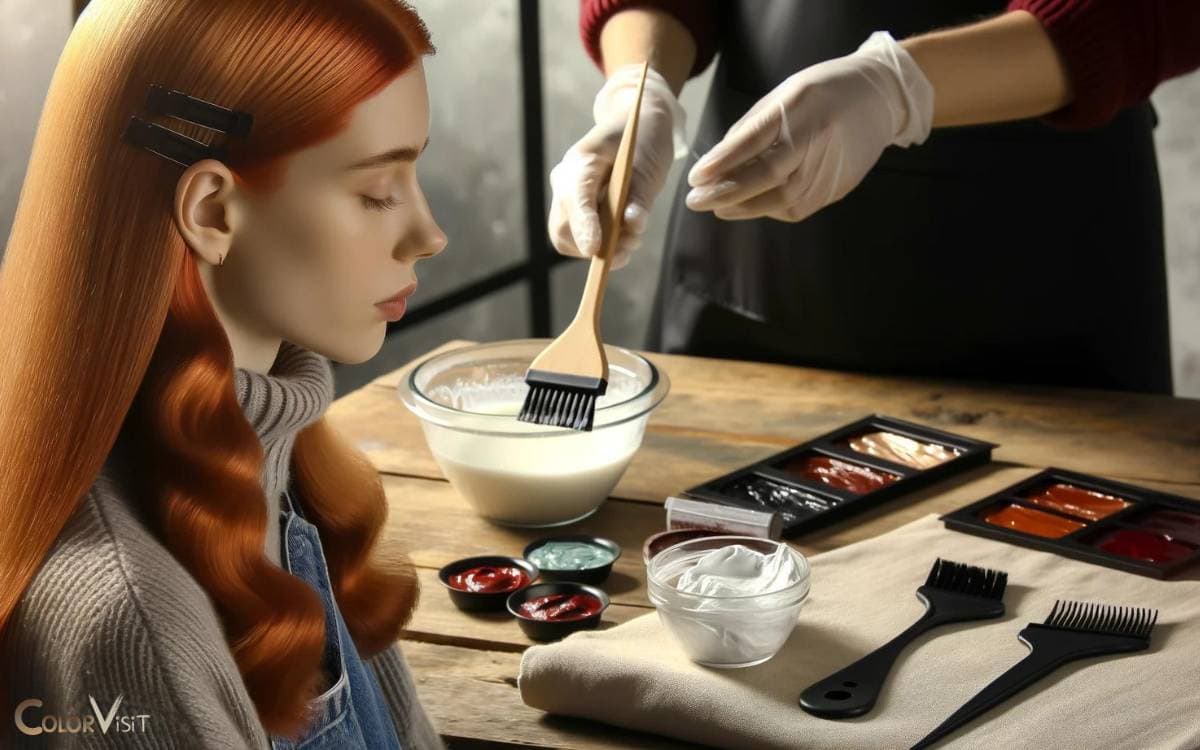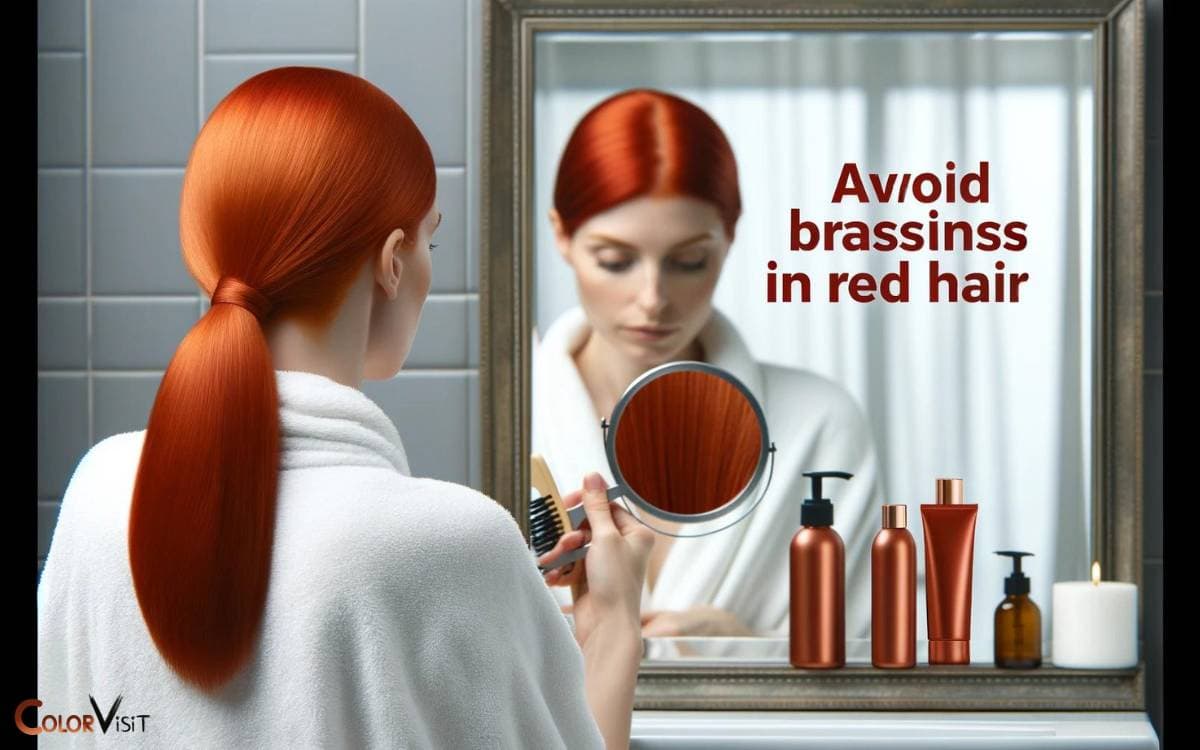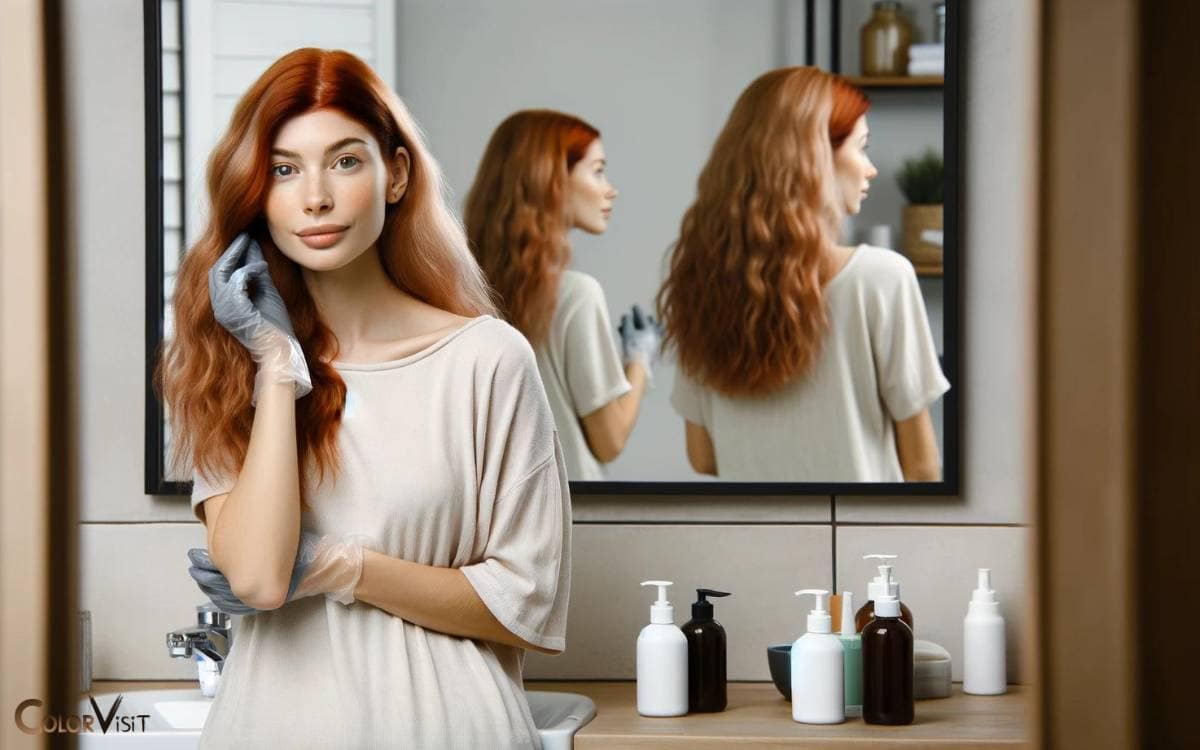How to Color Natural Red Hair? 6 Steps!
To color natural red hair, you need to choose the right shade, apply the dye correctly, and maintain it regularly. This process can be achieved through DIY methods or by consulting a hair professional.
Coloring red hair involves a few steps. Firstly, you have to select the right shade that complements your natural red hair.
This could range from auburn to strawberry blonde. After choosing the right color, the next step is the application.
This can be done at home or by a professional. Lastly, the maintenance of the color is crucial for long-lasting and vibrant results.
Here Quick Steps:
Remember, the key to coloring natural red hair lies in the selection of the right shade, correct application, and proper maintenance. With the right techniques, you can enhance the beauty of your natural red hair.
Key Takeaway
Step 1: Understanding Your Natural Red Hair Shade
Understanding your natural red hair shade requires carefully assessing its undertones and intensity.
- Red hair comes in a variety of shades, from copper to auburn to burgundy, and each shade has its own unique undertones that can range from golden to coppery to violet.
- Properly understanding these undertones is crucial for maintaining the vibrancy of your natural red hair.
- Red hair maintenance involves enhancing the natural vibrancy of your shade, and this starts with choosing the right hair products and dyes that complement your undertones.
- When coloring your natural red hair, proper dye distribution is essential to ensure an even and balanced result.
By understanding the undertones and intensity of your natural red hair, you can make informed decisions about how to best maintain and enhance its unique shade.
Step 2: Choosing the Right Hair Color
When choosing the right hair color for natural red hair, it is essential to consider your skin tone to ensure the color complements your overall appearance.
Additionally, avoiding harsh colorants can help maintain the health and vibrancy of your red hair.
These points will be further explored to provide practical guidance on selecting the most suitable hair color for your natural red hair.
Complementing Skin Tone
The first step in choosing the right hair color to complement natural red hair is to consider the individual’s skin tone.
When it comes to matching undertones, it’s important to identify whether the skin has warm, cool, or neutral undertones. This can help determine the most flattering hair color shades.
Here are some makeup tips to complement different skin tones:
- For Warm Undertones: Opt for hair colors with golden or coppery hues to bring out the warmth in the skin.
- For Cool Undertones: Consider hair colors with ashy or cool undertones like auburn or burgundy to complement the coolness of the skin.
- For Neutral Undertones: Individuals with neutral undertones have the flexibility to experiment with a wide range of hair colors, from warm to cool shades.
- Consider Professional Advice: Consulting with a professional colorist can help in determining the best hair color based on skin tone to achieve a harmonious overall look.
Avoiding Harsh Colorants
After considering the individual’s skin tone, it is essential to avoid harsh colorants and select hair colors that will complement the natural red hair while maintaining its health and vibrancy.
- Avoiding chemical damage is crucial for preserving the natural radiance of red hair. Opt for natural dye alternatives that are gentle on the hair while still providing vibrant color.
- Consider henna, vegetable-based dyes, or other plant-based colorants that offer a safer alternative to traditional chemical colorants.
- These alternatives not only minimize the risk of damage but also nourish and strengthen the hair, enhancing its natural beauty.
Below is a comparison table to help you select the right hair color that suits your natural red hair while avoiding harsh chemicals:
| Hair Color | Chemical-Free | Vibrant Result |
|---|---|---|
| Henna | Yes | Yes |
| Vegetable-based dyes | Yes | Yes |
| Plant-based colorants | Yes | Yes |
Step 3: Preparing Your Red Hair for Coloring
To properly prepare natural red hair for coloring, use a gentle sulfate-free shampoo to cleanse the hair and remove any product buildup. This is essential to ensure that the hair is a clean canvas for the coloring process.
After shampooing, consider the hair’s porosity and condition to determine the most suitable pre-color treatment.
When preparing your red hair for coloring, consider the following:
- Assess hair porosity to determine the absorption rate of color.
- Use a deep conditioning treatment to improve hair porosity and overall hair health.
- Consider a color correction treatment if necessary to address any previous coloring techniques or inconsistencies in hair color.
- Avoid harsh chemicals that can further damage the hair and opt for innovative coloring techniques to achieve the desired result.
Step 4: Application Techniques for Natural Red Hair
Now that your red hair is prepped for color, it’s crucial to ensure proper dye distribution to achieve an even and vibrant result.
Avoiding patchy color is essential, requiring specific application techniques tailored to natural red hair.
These techniques can enhance the natural vibrancy of your red hair, creating a stunning and long-lasting color.
Proper Dye Distribution
Achieving even dye distribution is essential when coloring natural red hair to ensure consistent and vibrant results.
To achieve this, consider the following techniques:
- Sectioning: Divide the hair into small, manageable sections to ensure that the dye is evenly applied throughout the entire head.
- Blending Techniques: Utilize advanced blending techniques to seamlessly merge the natural red tones with the chosen dye, avoiding harsh lines or patches.
- Color Correction: Address any existing color discrepancies or unevenness before applying the new dye to ensure a uniform base for the desired color.
- Application Method: Use a precise and systematic application method, such as the root-to-tip technique, to guarantee that the dye is distributed evenly from the roots to the ends of the hair.
Avoiding Patchy Color
Proper application techniques are essential for avoiding patchy color when coloring natural red hair.
- Blending techniques play a crucial role in achieving seamless and consistent color distribution.
- When applying color to natural red hair, it’s important to use sectioning and weaving methods to ensure that the dye reaches all areas evenly.
- Additionally, consider the use of color correction techniques to address any existing patchiness before applying the new color. This may involve pre-pigmenting certain areas to create a more uniform base.
- Color correction can help achieve a more even canvas for the new color, preventing patchiness and ensuring a harmonious end result.
By mastering these blending and color correction techniques, you can lay the groundwork for enhancing natural vibrancy in the next stage of the coloring process.
Enhancing Natural Vibrancy
To enhance the natural vibrancy of natural red hair through application techniques, consistent color distribution is essential, and this can be achieved by employing blending and weaving methods with precision and frequency.
- Balayage and Ombre: Utilize these modern coloring techniques to add dimension and depth to the natural red hair, enhancing its vibrancy and creating a seamless, natural look.
- Highlighting and Lowlights: Strategically place highlights and lowlights to accentuate the red tones and add dimension, resulting in a vibrant and multi-dimensional appearance.
- Color-Enhancing Treatments: Incorporate color-enhancing treatments and glosses into the hair care routine to maintain the vibrancy of the red hair color and combat fading.
- Regular Trims: Schedule regular trims to keep the hair healthy, as well-maintained and healthy hair reflects light better, showcasing the red hues.
Step 5: Avoiding Brassiness in Red Hair
Prevention of brassiness in red hair begins with a thorough understanding of the underlying pigmentation and its susceptibility to oxidation.
Red hair is more prone to brassiness due to the higher concentration of pheomelanin, which is susceptible to color shifts.
Utilizing color correction techniques and specialized products can help neutralize unwanted warm tones and maintain a vibrant red hue.
The table below outlines effective strategies for preventing brassiness in red hair:
| Prevention Techniques | Color Correction Techniques | Specialized Products |
|---|---|---|
| Use of purple shampoos | Toning treatments | Anti-brass hair masks |
| Regular deep conditioning | Balayage/highlights | Color-depositing shampoos |
| Avoiding over-washing | Gloss treatments | UV-protectant sprays |
Step 6: Maintaining Vibrant Red Hair
Red hair can be kept vibrant by employing a combination of proper maintenance and the use of specialized products.
To maintain vibrancy and prevent fading, consider the following innovative tips:
- Gentle Cleansing: Use sulfate-free shampoos and conditioners specifically formulated for color-treated red hair to prevent stripping of the color molecules.
- Cool Water Rinses: Rinse your hair with cool water to seal the hair cuticle and lock in the red pigment, preventing it from fading.
- UV Protection: Use hair products with UV filters or wear a hat when exposed to the sun to shield your red hair from UV damage, which can cause color fading.
- Color-Enhancing Treatments: Incorporate color-enhancing treatments into your hair care routine to refresh and revitalize the red pigment, maintaining its vibrancy between color appointments.
Professional Help Vs. DIY Coloring
When considering coloring natural red hair, individuals should weigh the benefits of professional salon services against the option of do-it-yourself (DIY) coloring.
- Salon coloring techniques are often more advanced, with professional colorists able to create custom shades and provide personalized advice based on the client’s unique hair characteristics.
- They have access to high-quality products and the latest innovations in hair color technology.
- Additionally, professional salon services offer a level of expertise and precision that can be challenging to achieve at home.
- On the other hand, DIY coloring provides the convenience of coloring hair on one’s own schedule and in the comfort of home.
However, it’s essential to consider the potential risks of improper application and the importance of professional advice for maintaining hair health and vibrancy.
Conclusion
Coloring natural red hair requires understanding the shade, choosing the right color, and proper application techniques.
To maintain vibrant red hair, it is important to avoid brassiness and use proper maintenance techniques.
Interestingly, red hair occurs in only about 1-2% of the world’s population, making it a rare and unique hair color to embrace and celebrate.
